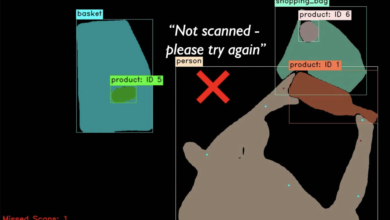Businesses don’t like surprises. Unwelcome disruptions can often become a financial burden, or even cause long-term damage to your reputation. That’s why businesses invest in market research; by testing new products or ideas before they are released to the public and monitoring shifting consumer sentiment to anticipate potential issues, they decrease the chance of surprises. Every good business does what it can to stay on top of changing trends and better understand its current and future customers.
But imagine if a business could, with just a few clicks, predict with some certainty how consumer sentiment will change in the future? What if brands could research their customers’ expected reactions to an idea or a product before a prototype was even developed? Or better still – what if they could predict a future trend or need, and develop a solution to fill a gap in the market that didn’t even exist yet?
Imagine the time and money saved from knowing if a new idea will be a flop or a success. It might sound like a fantasy, but the reality is, this is the future of market research – all thanks to emerging technologies such as artificial intelligence (AI) and machine learning.
Real-time data
The speed at which market research has accelerated over the past few years is staggering. For decades, it was the norm for market research to take weeks or even months to collect and act. And even then, the hefty paper document would likely sit on a desk for days or weeks before it was addressed.
But in the world of a 24/7 news cycle and constant social media consumption, businesses don’t have days, let alone weeks or months, at their disposal. A single event on one day means waking up to a global movement the next. With news ripping around the world at lightning speed, businesses need to stay ahead of consumer sentiment as it changes in real time – and adjust their messaging and offerings accordingly.
We’ve witnessed this during the pandemic. There were airlines that had ads running on autopilot, heralding the fact they wouldn’t charge travellers for extra baggage. But with airlines grounded and many people in lockdown, those ads didn’t just fall flat; they incited potential consumers who then flooded airlines with complaints about being out of touch with reality. Businesses that don’t keep their finger on the pulse – and adequately adjust their communications on the go – risk being branded as tone deaf and out of touch. And only through access to real-time, on-demand insights can businesses stay one step ahead of the conversation.
But now, even that may not be enough.
Demand driving innovation
The pandemic has accelerated innovation and digitization at a rate we could never have predicted. It’s not so much that new things have been invented during the pandemic, but simply that there’s been a rapid acceleration in the adoption of new services and solutions, driven by increased demand. Food delivery is one example; food delivery as a concept isn’t new, but with so many people stuck in their homes over the past two years, consumers have turned to it more than ever before. As a result, delivery services are needed to create a faster, more efficient consumer experience.
It’s been the same in market research. The industry was already talking about the need for real-time insights before the arrival of COVID-19, but the pandemic hastened this demand in a significant way. Consumer behaviour during this period changed significantly – something we’ve been monitoring in our Global Consumer Barometer research over the course of the pandemic – and it became clear to businesses that they needed to tap into real-time insights to stay on top of constantly evolving consumer sentiment.
One of the biggest challenges for businesses during the pandemic has been grappling with uncertainty – never truly knowing what will come next. Even with access to on-demand insights, it’s been a very reactive experience for many businesses. As we begin to see the light at the end of the tunnel, it’s time for businesses to move from reactive to proactive – and that’s where AI-driven insights come into play.
Artificially intelligent insights
When it comes to data, you might think the more, the better. But the truth is, too much data can be overwhelming. When you have tens of millions of consumers providing millions of data sources each, you end up with an abundance of data at your fingertips. It’s all worthless if you can’t make sense of it.
AI can change this by analysing data and presenting it in a way that delivers rich, detailed, and useful insights. AI can pull together millions of data points in mere seconds – a job that would be impossible for a human to do manually.
Perhaps the most exciting part about using AI in this way is that, when combined with machine learning technologies, AI can notice patterns while it’s analysing the millions of data points of millions of people across the globe. And over time, it can use the data it has collected to predict future outcomes. This is where we can develop a predictive modelling engine, which not only allows us to look at past behaviours, but also helps us create a model to predict future needs. Therein lies the real gold – predicting future consumer needs and desires. There isn’t a business in operation today that wouldn’t benefit from having insight into their customers’ future needs.
Past, present and future
Despite the clear benefits of emerging technologies in research, it’s important to note that historical data, in and of itself, is not dead. Historical data is still a useful tool and can be an excellent indicator of what’s happening – and it can still help leaders make business-critical decisions. But historical data on its own simply doesn’t cut it anymore. In today’s fast-paced environment, businesses must have access to the full trifecta – historical data, real-time data, and predictive insights. Only by having insights into the past, present, and future sentiments of your customers can your business truly gain the competitive edge.






[…] Originally published by The AI Journal. […]